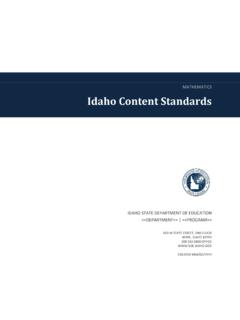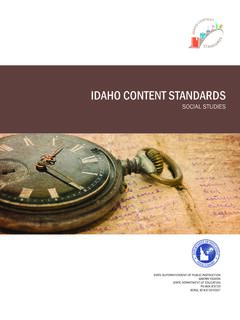Transcription of Sample Parent Engagement Survey
1 Demarest 2008 Charter Start Workshop Poor Okay Super 1 2 3 4 5 6 7 8 9 10 Welcoming Environment 1. When I was new to town I could readily find the building and the main entrance 2. I am always greeted and offered assistance 3. I am regularly encouraged to observe in classrooms 4. I am invited in more than one way to events at the school. 5. There are easy to follow directions or a person to direct me to locations in the school. 6. There are signs of what the school is all about from the moment I walk in the door. 7. I feel special and at home at our school 8. I feel like a guest rather than a family member when I come to school TOTALS The school supports learning at home 9. I know what my child is expected to do for homework 10. I get regular communication about assignments 11.
2 I have the materials my child needs to complete assignments 12. I could attend a homework class so I can help my child with math 13. The amount of homework assigned is appropriate and allows for family time TOTALS Sample Parent Engagement Survey Demarest 2008 Charter Start Workshop Effective two-way communication between home and school 14. The school gave me a Parent handbook with helpful, current info 15. I get a weekly newsletter 16. The website helps me keep up with what s happening at our school 17. My child s teacher calls or emails me when she has concerns and when my child does something neat 18. The principal and teachers call me by name. 19. I m comfortable initiating contact with the school. 20. The communication plan helps me know who to contact with a concern.
3 TOTALS Other important Engagement issues 21. School policies are fair and clear and consistently applied. 22. The school recognizes that I know my child best. 23. If I m upset about something at school I know I would be listened to. 24. I feel included in major decisions at the school 25. My child s teacher and I work as a team to help him/her be successful. 26. I have been invited into a leadership position. 27. The Parent council really represents my points of view. TOTALS Grand Totals Demarest 2008 Charter Start Workshop Ways that Parents Engage in their Child s Education 1. Parenting 2. Communicating 3. Supporting the School 4. Learning at Home 5. Decision Making 6. Collaborating with the Community Family Friendly Schools, LLC411 North Main , VA Family Engagement Survey32-question family Engagement surveyAvailable in both English and SpanishGathers information in 4 domains:1.
4 The welcoming environment of the school toward families2. The degree to which the school supports learning at home3. Effective two-way communicationbetween home and school4. Important issues in family Engagement ( policy, governance, parental efficacy)STEP 1:STEP 1:Baseline Data CollectionWhere are we?STEP 1:STEP 1:Baseline Data CollectionWhere are we?Data ReportingFFS generates a customized Family Engagement Quantitative Report of the data collected for the school or district. This comprehensive analysis reveals specific areas of development to create measurable, strategic Family Engagement 1:STEP 1:Baseline Data CollectionWhere are we?Public Opinion ResearchIn addition to the Survey results, FFS can provide family and community opinion research through Qualitative analysis. Through focus group and individual interview research, FFS obtains important community based information to enhance your engage all families 2:STEP 2:Engage!
5 InstituteLearn, Plan, ExecuteThe Engage! InstituteThree Day EventDesigned to create positive and productive school cultures to advance the achievement of all students through explicit family Engagement processes. At the conclusion of the institute participants will be able to:1. Develop dynamic relationships between leadership , Staff, and Assess individual school dynamics, identify programs, practices, procedures, and policies which are Family Friendly; and identify those that lead to disenfranchised and disengaged families. STEP 2:STEP 2:Engage! InstituteLearn, Plan, ExecuteThe Engage! Institute3. Use collected data to create and implement a measurable process to create dynamic family Engagement . 4. Measure and improve student achievement through systemic family Engagement practices. 5. Create a school culture that supports achievement of all students. STEP 3:STEP 3:Distance CoachingNurturing AccountabilityDistance CoachingFFS designed Distance coaching , sometimes called EdCoach , as a practical, cost-effective way for Dr.
6 Constantino and other Family Engagement Specialists to maintain close and consistent contacts with the cadre team participating in the Institute. Through external moderation, Distance coaching increases the likelihood that Institute customers will return to their schools and implement, execute, and maintain an engaged 3:STEP 3:Distance CoachingNurturing AccountabilityDistance CoachingDistance coaching includes the following:1. Two (post institute) web/tele- coaching per school with Dr. Constantino and/or another FFS Certified family Engagement specialist using state-of-the-art, web-based Focused time during these 45 minute to one hour sessions to work on opportunities and challenges teams are facing implementing the family Engagement process and to provide support, guidance, and Access to an archive of sessions for repetitive learning and for team members unable to attend live 4:STEP 4:Tracking SurveyProgress Report & Mid Course CorrectionsTracking SurveyThe FFS Tracking Survey provides theability to follow or track the progress of individual school family Engagement plans by soliciting feedback from both families and school staff.
7 Two tracking surveys are conducted, one at the mid-mark and one at the end of the Engage Survey = Progress ReportIf the results do not meet expectations, we adjust and make the necessary mid-course corrections to keep you on Survey = Report CardIn comparing the baseline to this Survey we determine the effectiveness in implementing the Family Engagement 5:STEP 5:Onsite CoachingMotivation, Training & Staff Capacity BuildingOnsite CoachingEngagement is all about relationships and at FFS we believe in building meaningful relationships with our clients that liberate greatness. Consequently, step five involves onsite visits for executive planning, team building, and professional development sessions lead by members of the FFS team of Engagement specialists. We recommend a minimum of two onsite visits per school year. FFS will assist you in selecting the right professional programs for your organization based on data collection and Engaged!
8 SchoolTHE ROLE OF TECHNOLOGY IN FAMILYPARTNERSHIPST echnology provides only an opportunity; an active interest on theschool s part in increasing parental involvement is necessary ifthe opportunity is to be used. James ColemanTechnology can significantly bolster the partnerships between home andschool provided school leadership understands the value in strong familypartnerships. Students can also attain the autonomy in their education andaccountability for learning, which is essential to long-term success. With theadvent of technological applications in education, school leaders have newresources at their disposal. Blanchard (1997) explains how technology can servethe family-school connection: (1) communication and information, (2) learningand instruction, (3) interest and motivation, and (4) resources and costs. Heexpands on these four areas by highlighting specific technological applications:establishing two-way communication between homes and schools; discussingschool experiences within and among families and communities; involvingfamilies who are presently difficult to reach; helping teachers and families acquireneeded knowledge and skills; building the capacity of the schools to improve theeducational health of the family; helping parents extend learning to the home inmore meaningful ways by allowing them to be instructors or coaches as well aslearning partners; helping families and schools motivate children; providingsupport and coordination for homes and schools to sustain involvement; andreducing resource costs of educating APPLICATIONSThe first school-wide application of voice-messaging technology was in1987.
9 Experiments resulted in the Transparent School Model, which could beused in any school (Bauch 1997). The model provides voice-based informationbetween teachers and parents and has at its core two primary functions:First, parents can call and listen to the teacher s daily message; and second, thesystem can send automated calls to parents with information that the familiesneed. In most schools the results are astonishing. At least half of the parents callevery day to hear teacher messages. Parent involvement rates go up by500 800 percent. Student learning performance goes up and success ratesimprove (Bauch 1997). New technology can now link the voice-messagingsystem with the school s web page, allowing Internet access to the same schooland class information as well as attendance and achievement data for individualstudents. Voice mail, e-mail, interactive websites, and other two-waycommunication systems are now established ways to open schools to virtually allhomes.
10 But it is the telephone that continues to have all the advantages offamiliarity, easy use, and widespread availability. In order for schools to besuccessful with using technology to promote true Parent involvement, rather thandefaulting to a more traditional, one-way homework hotline communicationsapproach, teacher training and the personal involvement of the individualschool s leader are critical to long-term logical step in the lineage of voice-messaging applications was thecreation of the Bridge Project. Funded by the American Business Collaborationand in partnership with Vanderbilt University, schools across the country had theopportunity to apply for grant funding to install voice-messaging technology as away to garner more Parent involvement with school. In 1995, 104 schoolssuccessfully completed grants and were funded for the Bridge Project. Beforestarting the Bridge program, the mean number of Parent contacts per teacher perday for Bridge Project schools was Only two to three parents had any typeof interaction with their child s teacher on any given day; most parents had one month of using the voice messaging technology, in tandem withconcepts learned from Transparent School Model training, Parent contacts perteacher per day increased to This initial gain was about 430 percent.















